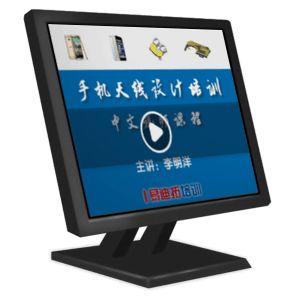- 易迪拓培训,专注于微波、射频、天线设计工程师的培养
如何设计便携式产品的电源系统 (一)
Battery up time is the key system parameter so a detailed understanding of device power requirements under battery dynamics is the first order of business. Often, hidden or unstated conditions in the power specification document lead to a final design capable of supplying more power than may be required. Besides adding to system costs an over designed supply potentially wastes more power especially when the battery is nearing discharge. Interview the system engineer to make certain the maximum power stated is realistic and not beefed up beyond the published maximum current requirements for the individual components.
Get a handle on supply voltage power up requirements. A common oversight is that of assuming a complex integrated circuit using multiple supply rails can have these rails applied simultaneously. Proper supply voltage sequencing may not be just a necessity for proper operation. Improper sequencing may cause reliability issues.
Optimum system power efficiency begins with the power supply and in particular, the power components. The supply controller power consumption is generally well specified but it is the power MOSFET and inductor or transformer that passes the system power and some power components don’t pass as much to the system as others. Magnetic component and MOSFET vendors can help you choose the right component that fits the application while being the most efficient choice for your design. Don’t forget the capacitors. These are critical to minimizing output ripple and noise.
Easily overlooked is the space allowed for the power portion of the system. Know the limits of all dimensions in the power supply space. Components are easily mounted to the bottom of the board as necessary or when some limitation on the top side is encountered. Generally the power supply will reside on a single system PCB that is multi-layered allowing the power supply circuitry to benefit from the internal layers. Use the multiple form factors offered by passive component vendors to realize a compact design.
Besides requiring attention to interaction between sensitive and noisy circuitry, the printed circuit board layout can save power and reduce unwanted voltage drops. Printed circuit boards are completely copper clad before being processed into a final PCB. Use this copper as if the success of the design depended on it. Remember that copper also makes a great heatsink for those heat-generating components in the power train.
Before beginning layout, generate a component floor plan to assist the PCB designer in the layout of the board. Thermal and EMI considerations are no less important than EMI reduction or noise interaction prevention.
Emissions can’t be overstated until you fail to achieve compliance with the regulatory agencies. Power supplies generate plenty of emissions and the most likely top runner are the magnetic components. A shielded inductor may not be required as sometimes an inductor fabricated on a different bobbin may be less noisy. A chat with your magnetics vendor is time well spent. The PCB ground plane can do more than just minimize voltage drops having some ability to stop or confined radiated fields.
Locate a controller that takes the guesswork and rework off your plate. Using single or dual controllers may result in a cheaper solution but doesn’t consider the long-term effects of system upgrades or the amount of design and sustaining engineering among other unforeseen costs. A multi-channel controller with some minimal degree of flexibility for future change or upgrade is a good choice. Controllers offering field programmability keeps your design alive when marketing adds feature upgrades or enhancements to the product.

Figure 1 - Typical handheld power management system. The left side shows the type of input power from Li-Ion battery or wall wart, the power manager, the output power requirements, the typical systems and the sequencing required by most devices. Since the power manager is fully programmable and configurable with GUI software over the I2C bus, if the system blocks change, so can the manager.
There are 7 high efficiency switching regulator voltage outputs, consisting of: three synchronous PWM “buck” step-down converters, one configurable PWM “boost or buck” converter, two PWM boost converters, one configurable PWM “boost” step-up or inverting converter, one Low Dropout (LDO) linear regulator, and a fully programmable 1-cell Li-Ion battery charger.
The Programmable Linear 1-cell Li-Ion Battery Charger provides multiple recharge cycles from registers containing all information about the battery-charging algorithm. There are programmable options such as final float voltage, charge current, precharge current, fast charge voltage, fast charge current, term. charge current, OT/UT thresholds and charge timers.
A worst case thermal and electrical analysis completes the design and minimizes field returns. This should be a shared experience as to avoid overlooking any potential design weakness. The result of these findings may dictate some change to the design and the layout but well in time before the layout is complete.
上一篇:如何进行高速电路的ESD保护
下一篇:如何设计便携式产品的电源系统 (二)

